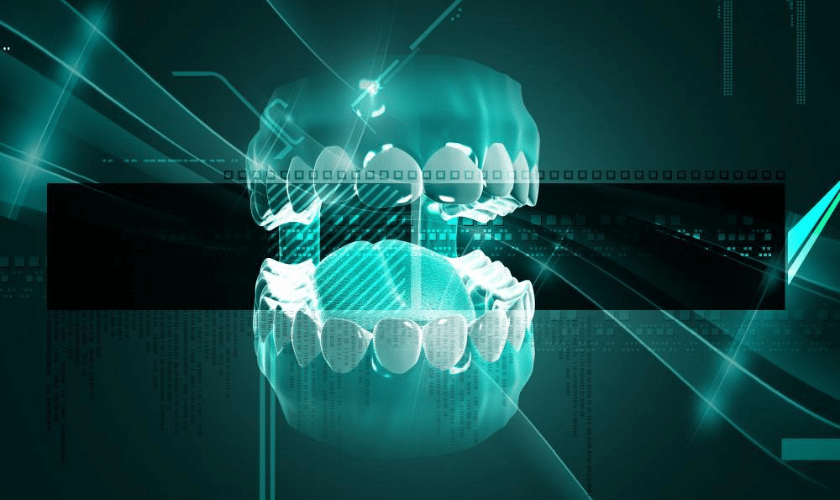Thanks to the dynamic advances that are revolutionizing dental implant technology. Also, starting on a road towards a confident smile has never been more thrilling. The landscape is changing. With the help of advanced materials, precise planning with 3D Imaging, and the incorporation of smart technologies, Dental Implants are improving themselves. Customization takes the front stage in this era of digital dentistry.
Additionally, we offer a tailored approach to each individual’s unique dental demands. Join us as we explore cutting-edge dental innovation. Here, we get advancements that offer more than simply tooth replacement. But a complete shift in the way we approach oral health, assuring long-lasting and aesthetically beautiful outcomes.
The Evolution Of Dental Implant Materials:
With the introduction of new materials such as zirconia, which provide a natural tooth-like look. Also, with a lower risk of allergic responses, dental implant technology is changing because of the varied characteristics of metals, and problems such as osseointegration exist. Nanostructured surfaces have the potential to improve biocompatibility and antibacterial activity. Stainless steel, co-based alloys, titanium alloys, dense HA ceramics, and bio-glasses are now used as implant materials. Additionally, to increase mechanical characteristics, biocompatibility, and long-term durability, new biomaterials are being produced.
Precision Planning With 3d Imaging:
Imaging technology advancements have revolutionized dental implant operations. This technology allows dentists to visualize patients’ oral anatomy clearly. Cone beam computed tomography (CBCT) scans produce comprehensive 3D images. These images improve accuracy while reducing problems. Nanotechnologies for surface modification of implants, such as Ti surface biomodification. This is widely used to provide robust bone-implant contact, osseointegration, and bone growth. Afterward, plasma spraying, nano-porous surfaces, micro-arc oxidation, sol-gel-derived HA nanofibers, and chemical vapor deposition all improve osteoblast dispersion and activation.
Smart Implants And Osseointegration Accelerators:
Dental implants are transforming with smart technology. This provides real-time data on their state and speeds up healing time. Bioactive coatings and growth factors are new additions to implants. This promotes faster and more efficient osseointegration. Additionally, it takes a shorter treatment time. Osseointegration is the systematic interaction of living bone with the implant surface. Nanocomposite coatings are critical for improving osseointegration, inflammation, and osteolysis. Bioactive coatings such as HA and CaP are frequently employed to promote cell adhesion. With osteoblast development and mineralized collagen formation in Ti implants. TiO2 activation with vitamin B6. Also, human pluripotent stem cell-derived mesenchymal stem cells (iPSC-MP) promote stem cell proliferation as well as gene and differentiation production. Modulation of nanoscale osseointegration may lead to a novel approach to bone regeneration.
Customization Through Digital Dentistry:
Digital dentistry has revolutionized dental implant customization, ensuring a customized solution for each patient. Implants that closely match the patient’s unique oral anatomy which is created using computer-aided design (CAD) and computer-aided manufacturing (CAM) technology. This amount of customization enhances not just the visual output but also the usefulness and comfort.
Future Dental Implant Research:
Chronic inflammation and infections are the leading causes of implant failure. As root materials for metal implants, non-metallic replacements such as bio-ceramics, bio-glasses, and PEKK are employed. Nanotechnology has the potential to provide high-efficiency, low-cost implant materials that are bioactive and anti-infectious. Organic antibacterial compounds such as chitosan and antimicrobial peptides are being researched to combat antibiotic resistance. Nanostructure manufacturing is a big step forward in the development of dental implants and bio-inspired technology. There are no standardized antibacterial implant procedures or protocols for clinical application, and long-term in vivo studies are necessary.
The advancement of dental implant technology serves as a beacon of progress in the search for flawless smiles. The convergence of sophisticated materials, precise planning, and intelligent solutions has heralded a new age of transformational dental treatment. As we see the seamless integration of design and function via customization, it is clear that the future of dental restoration is brighter than ever. Accept these advancements with confidence, knowing that the path to regaining your smile now includes unrivaled accuracy, efficiency, and personalization. The long-term outcomes attest not just to the science but also to the artistry of modern dentistry, resulting in smiles that exude lasting delight.
